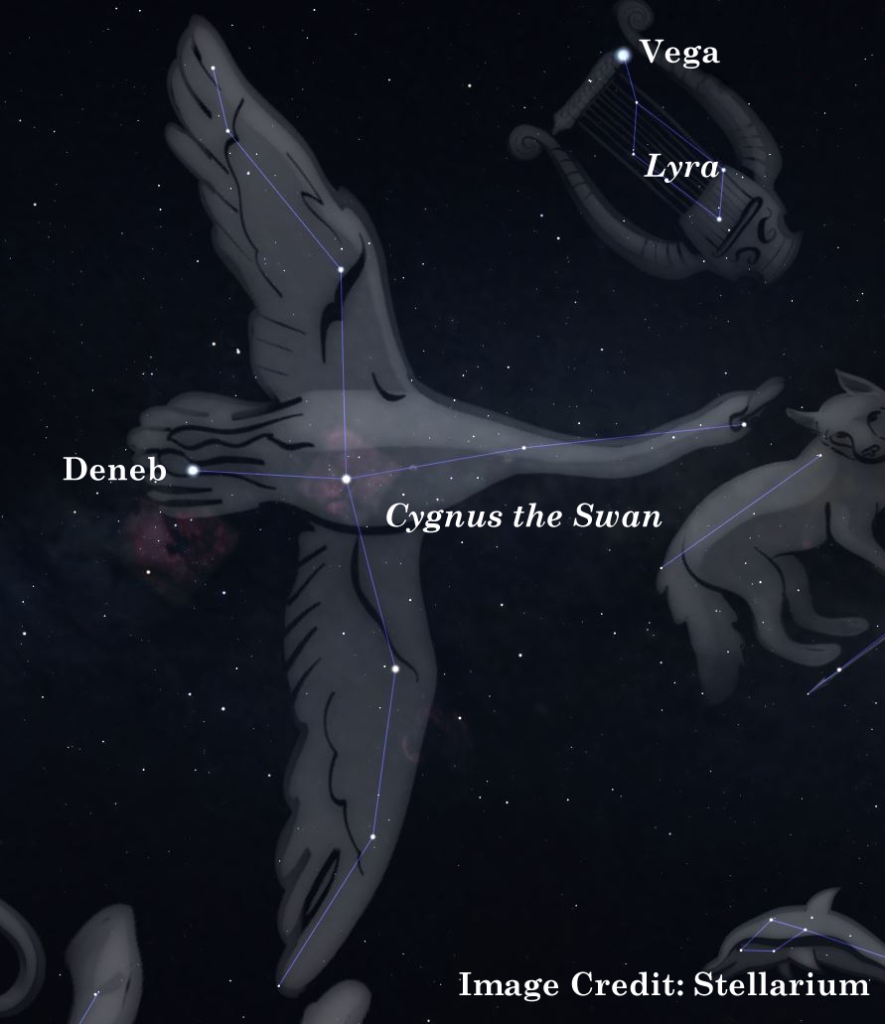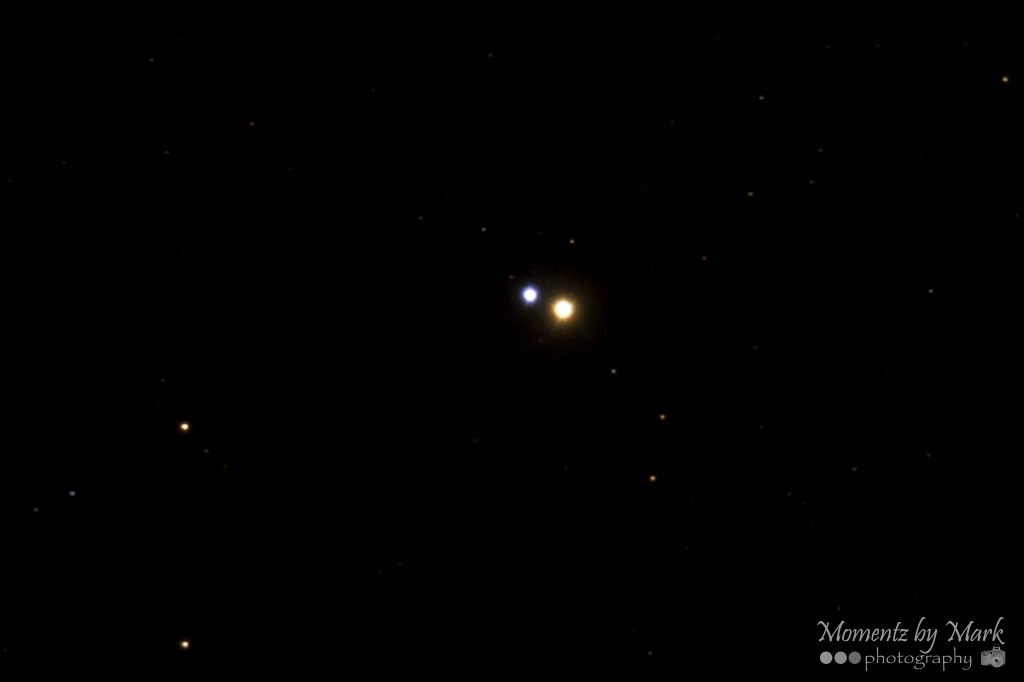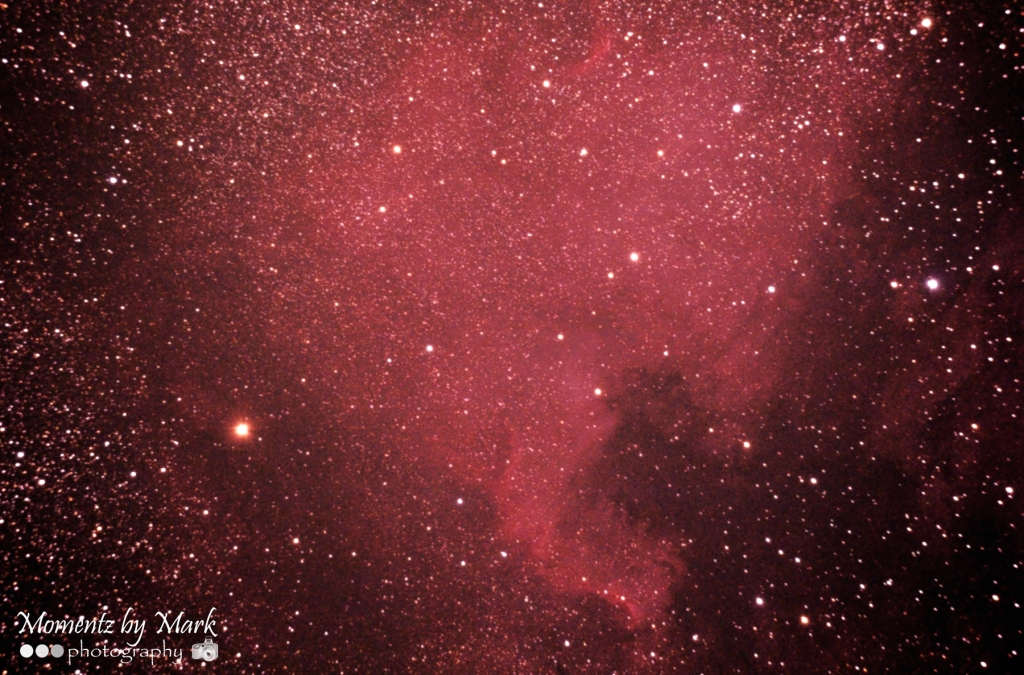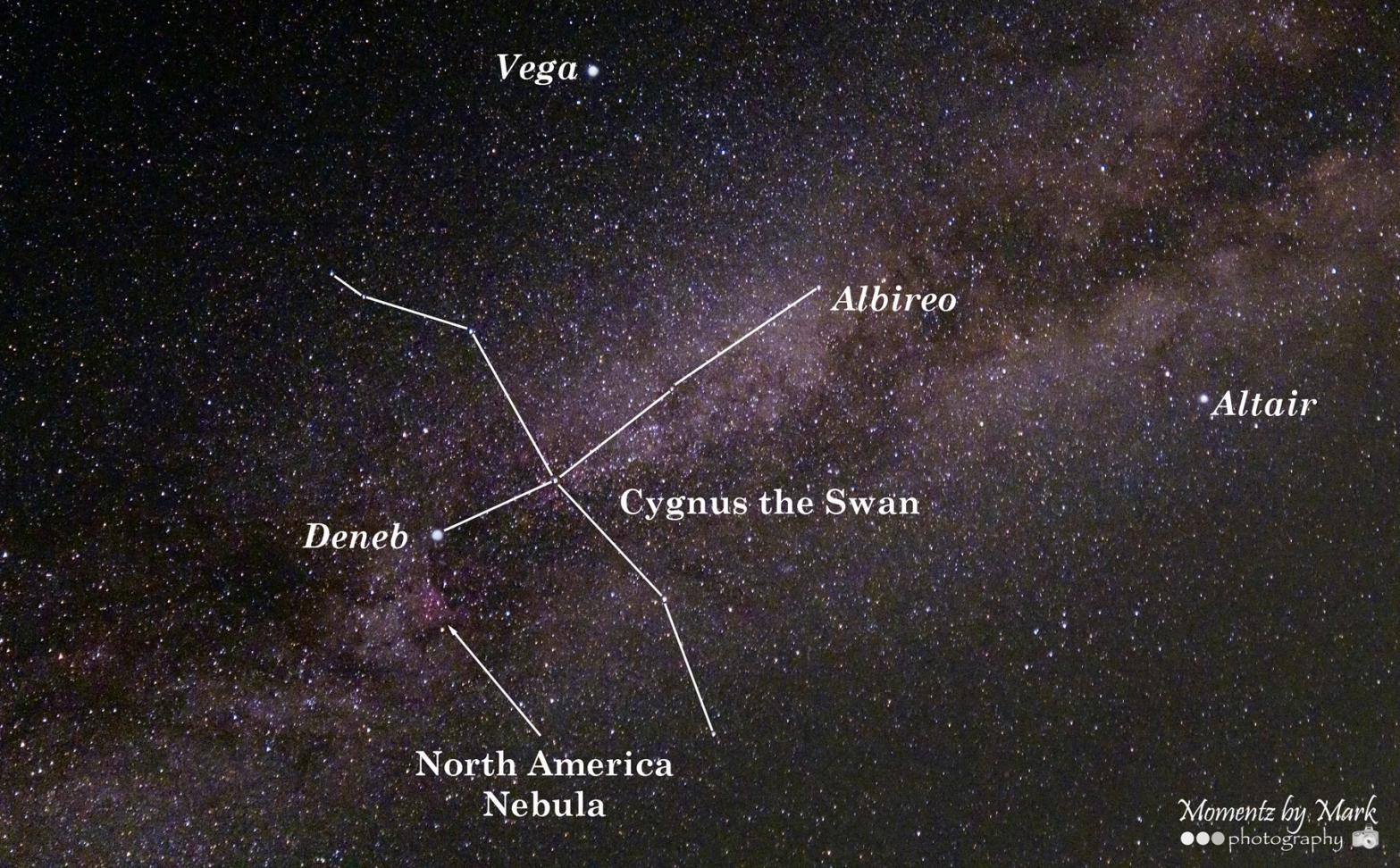After visiting Altair and Aquila the Eagle in the Summer Triangle, move back to the north along the faint glow of the Milky Way to find the third star of the summer triangle, Deneb. Deneb resides in the constellation of Cygnus the Swan, the second bird which adorns the celestial triangle. Deneb was derived from the Arabic language meaning “tail” or “tail of the hen.” When we look up, we find Cygnus appearing to fly south along the spine of the Milky Way. Tracing out this pattern of stars we see Deneb marking the tail of the swan. Going south from Deneb, through the body and outstretched wings, and then to the neck of the swan, we come to Albireo which forms the head of Cygnus. Northern hemisphere observers often refer to Cygnus as “the cross” or the “northern cross” for it makes a nearly perfect cross and is substantially larger and easier to see than the famed Southern Cross.

Cygnus the swan was not always a swan. Greek legend tells a tragic story of Apollo’s son Phaeton (Fight-on), who tried to drive Apollo’s chariot across the sky. Apollo warned him not to drive too close to Earth lest he set it on fire. While driving the chariot, Phaeton lost control of the wild horses, and to spare the Earth a fiery destruction, Zeus threw a lightning bolt at the young boy, killing him instantly. The horses were able to then climb higher into the sky, scorching the path that became the Milky Way. It is said that Phaeton’s (Fight-on) charred body fell from the sky into the river Eridanus (Eh-rid-uh-nuss).
Cygnus was a good friend of Phaeton and could not believe his friend was dead. He dove repeatedly into the river trying to retrieve the body of his friend, but failed. In those days it was believed that unless the body of a person could be given a proper burial, they would not have peace in the underworld, but would instead roam the upperworld as a ghost. Zeus was so impressed with Cygnus’ devotion to Phaeton that he turned him into a swan, enabling him to dive more easily. Cygnus was eventually rewarded for his gallantry by a prominent place in the summer skies within the cloudy path of the Milky Way.
Cygnus’ bright first magnitude star Deneb or Alpha Cygni is a luminous white type A2 supergiant star. Even at a distance of nearly 1500 light years, it is still nineteenth among the brightest stars in the night sky.

Albireo or Beta Cygni is Cygnus’ second brightest star. It is one of the finest double stars in the sky, with the brighter member an orange type K3 giant star at magnitude 3.1 and its fainter companion, a blue type B8 star, with a magnitude of 5.1. They are separated by 35 arc seconds and make a beautiful contrasting blue and gold pair easily seen through a small telescope or even a 10×50 pair of binoculars.

The Milky Way passes through the center of Cygnus, making this region spectacular when seen with binoculars. When scanning the region of Cygnus, you will find dark dusty rifts throughout as well as a couple of open star clusters. Near the star Deneb is a milky region called the North America Nebula, an area larger than the angular diameter of the Moon and is best seen on a dark moonless night with low-power binoculars. Its shape really does represent its name.
Astronomy is good for the soul and lying under a bed of stars can be quite enjoyable, relaxing, and awe-inspiring. The Summer Triangle and the Milky Way will be with us all summer long, so find a dark place away from city lights and enjoy the mesmerizing view of this celestial triangle and the Milky Way.
Enjoy! And Keep Looking Up!

It’s always interesting getting to know the stars within a constellation as well as the pattern’s larger history. That image of the nebula near Deneb is gorgeous!
LikeLiked by 1 person